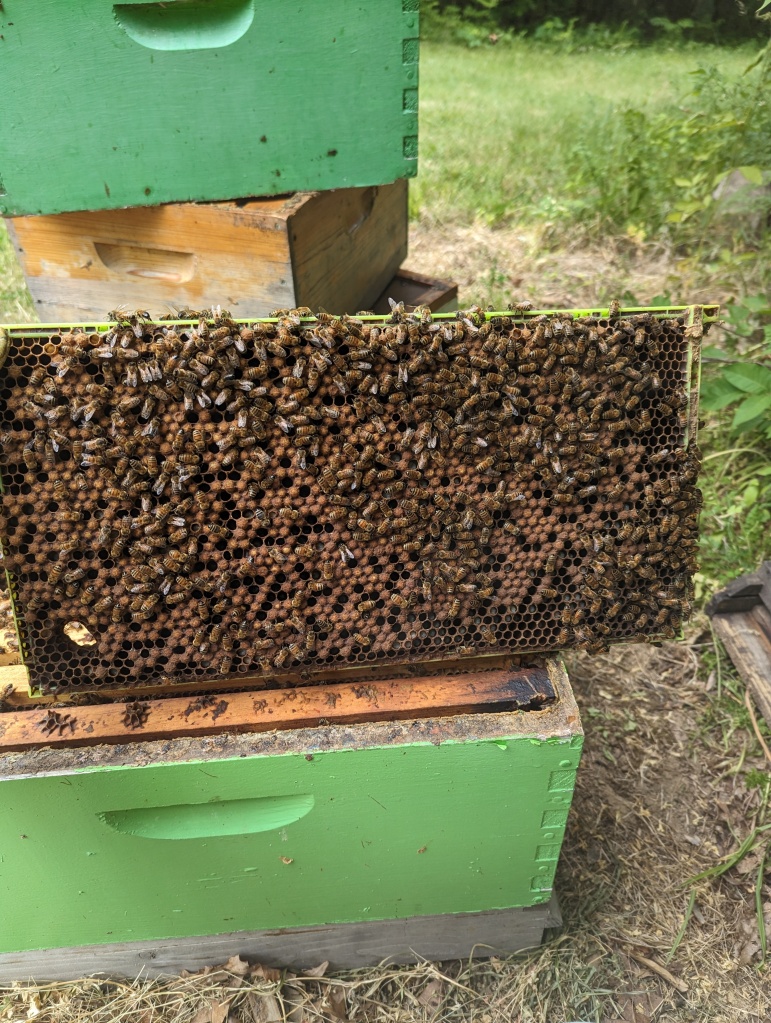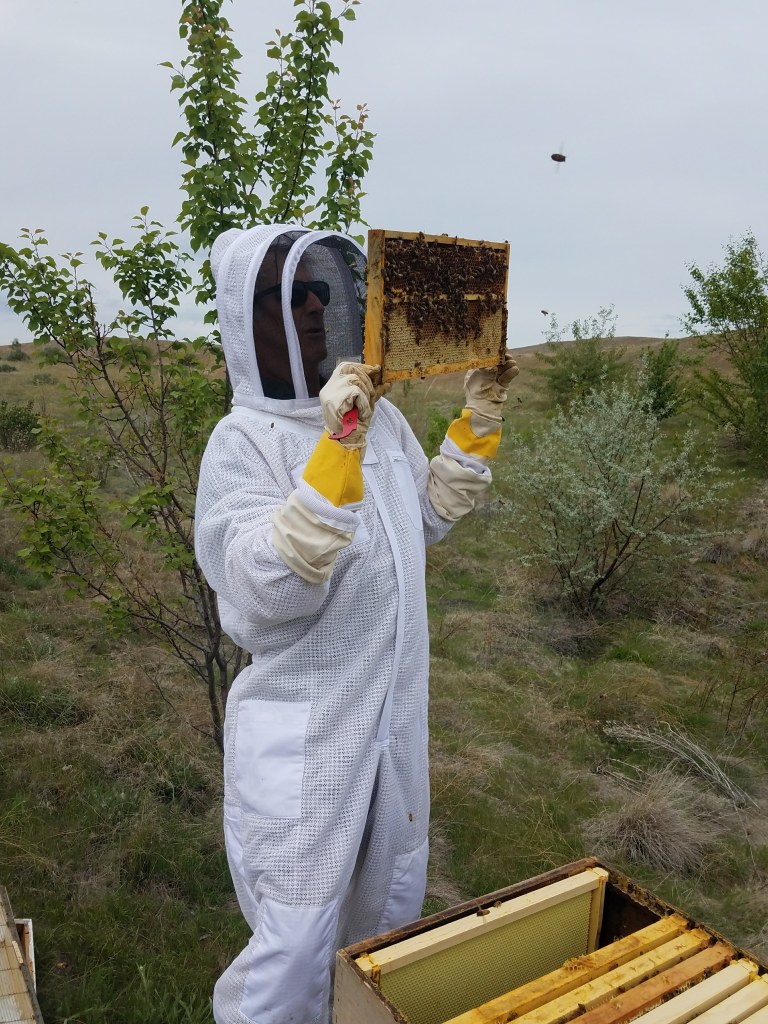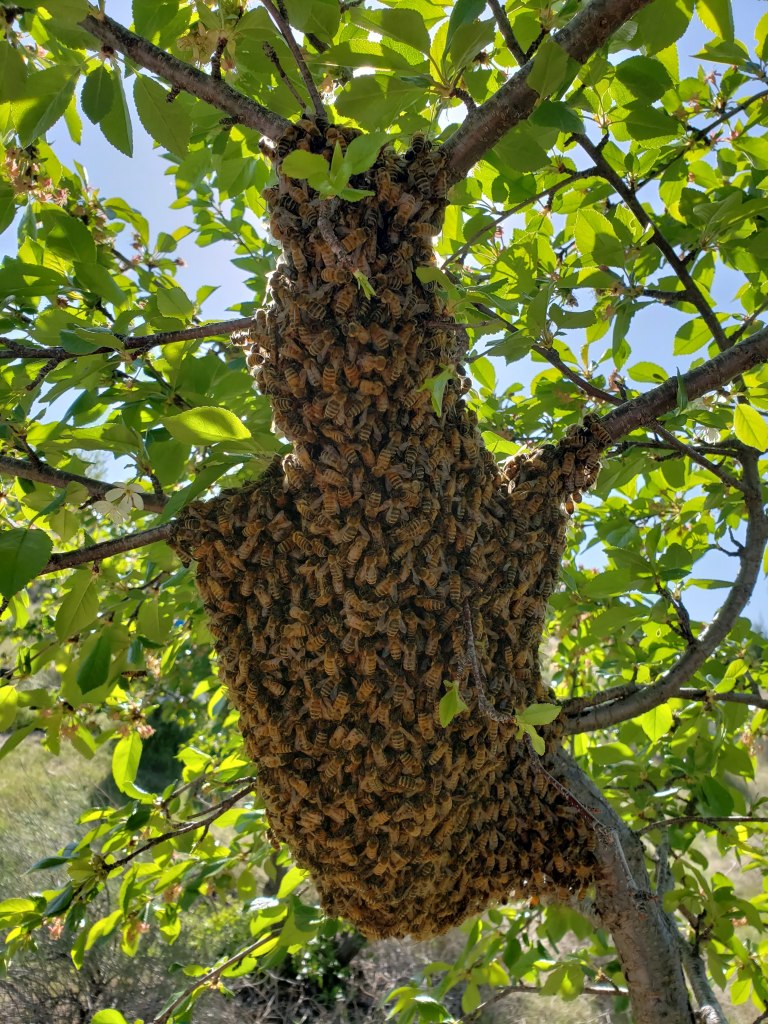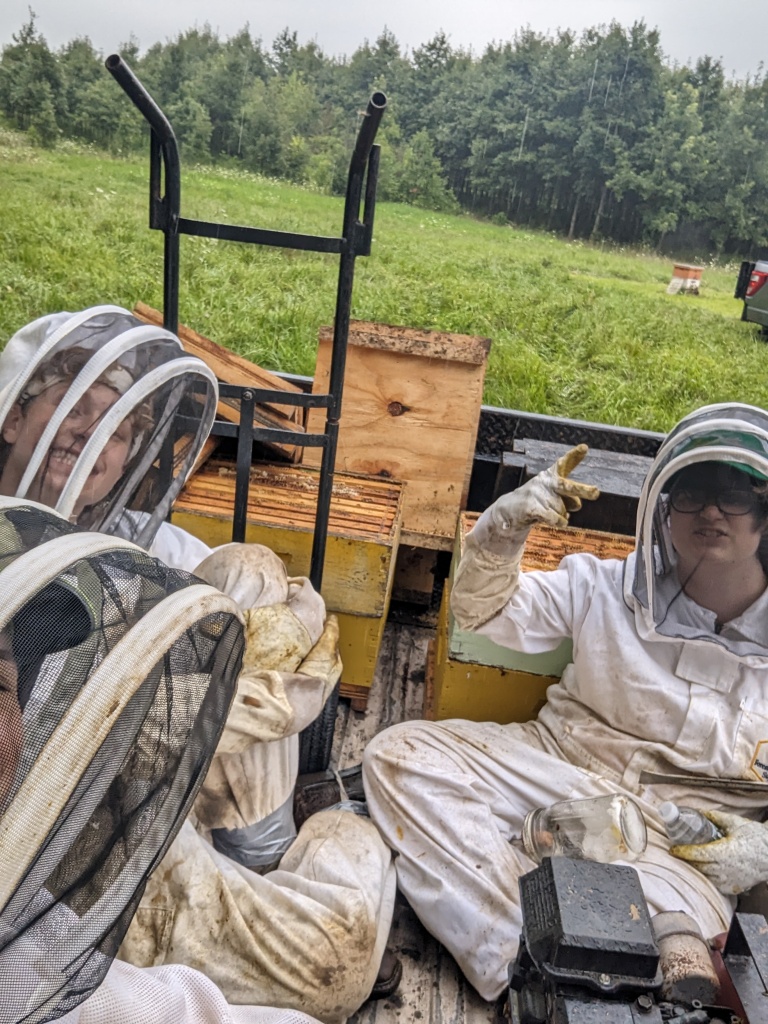Riley works in the Department of Entomology at Purdue University and is interested in honey bee health. Her recent research published in Insectes Sociaux can be viewed here.
IS: Who are you, and what do you do?
I am a PhD student researcher in the Department of Entomology at Purdue University. I work in the Harpur Lab investigating honey bee health with a focus on honey bee drones. The Harpur lab strives to bridge the gaps in our knowledge about genomics, the evolution of eusocial species, and their adaptive traits. My specific research interests include mutation and molecular mechanisms of repair.

IS: How did you develop an interest in your research?
I have always had a fascination with honey bees and medicine. When I was in high school my dad brought home a nuc of bees and invited me to join in the hobby with him. Spending summers doing mite washes, observing colony behaviors, and of course harvesting honey sparked my fascination with social insects. I ended up joining a bee lab during my undergraduate at Washington State University and developed further research interests in honey bee health. Now during my MS and PhD at Purdue University I am able to foster my interests in mutation using the unique haplodiploid honey bee.

IS: What is your favorite social insect, and why?
Honey bees from day one have captured my full attention. There are so many unique behaviors in these eusocial insects that make them a fascinating study subject. While my research interests lie more on the pathways within the insect itself, the colony structure of honey bees make them highly complex.
IS: What is the best moment/discovery in your research so far? What made it so memorable?
This past summer I worked with a mutant honey bee colony, where drones in the colony had either white or dark eyes. We ran a series of experiments to learn more about the sight deterioration in the white-eyed males. While we presumed that the white eye drones would go blind at some point, it was really exciting to perform some simple tests on this. I spent hours outside a colony observing drones leaving and returning to the colony. This was memorable partly due to the sheer amount of time I spent observing the mutants’ behaviors, but it was also fun to observe bee behaviors more generally.
IS: Do you teach or do outreach/science communication? How do you incorporate your research into these areas?
The Harpur lab works to spend a lot of time doing various outreach activities. I really enjoy connecting with the local community to talk about honey bees and pollinators more generally. I’ve done outreach with the local library as well as with scout troops in the area. My favorite moment is always when young children overcome their fear of an insect. It is a fun puzzle to teach children about honey bee genetics, and we all look forward to helping children ‘build-a-bee’ as a simple way to learn about the inner workings of a colony.

IS: What do you think are some of the important current questions in social insect research, and what’s essential for future research?
Insects play an integral role in human lives. They provide a powerful model for medical research, pollination to our agricultural systems, vital roles in our ecosystems, and so much more. I think we still lack fundamental knowledge on many social insect systems and discoveries within these systems will be key to innovative studies. Conducting comprehensive studies on the genotypes and associated phenotypes is crucial as it lays the essential groundwork for future practical research endeavors.
IS: Outside of science, what are your favorite activities, hobbies, or sports?
I am an avid reader of fiction. When I’m not pouring over journal articles, you’ll find my nose in a book. Reading is a really nice way to escape and embrace your creative side. I enjoy hiking and kayaking. Spending summers on Idaho’s whitewater was the perfect way to cool off after beekeeping.
IS: What is the last book you read? Would you recommend it? Why or why not?
The book I am currently reading for my insect genomics course is “A Primer of Population Genetics and Genomics” by Daniel L Hartl. This book has helped further my understanding of population genetics for someone whose background is more molecular biology. For my personal enjoyment, I recently read “Six of Crows” by Leigh Bardugo. I am a huge fan of books that describe things outside of our reality. While this book is more realistic than some, I really enjoyed how well-developed the character’s backstories were. There is a real art to developing a story where the reader can get inside the character’s head and understand the forces that drive them.
IS: How do you keep going when things get tough?
I am fortunate to have a supportive family and partner, as well as friends and colleagues. The going may get tough in the winter time for someone researching bees, but holding out till the next summer is well worth the wait.

IS: If you were to go live on an uninhabited island and could only bring three things, what would you bring? Why?
I would bring a really large book, some sunscreen, and some semipermeable membranes to filter seawater. I am well known as the coworker who advises sunscreen even when wearing a bee suit as well as the one who carries around a comically large water bottle.
IS: Who do you think has had the most considerable influence on your science career?
This is a hard question to answer. My first research experience as an undergraduate was not very rewarding. I switched my path to work in an entomology lab and was met with immense support from my co-advisors Dr. Nicholas Naeger and Dr. Jennifer Han. I found a renewed passion for research and was able to grow my interest in honey bees with an independent project under their advisory. I attribute my current career trajectory to the experiences created by these mentors. I would also name my current advisor Dr. Brock Harpur for his enthusiasm in studying social insects as well as his continued support for all of the students in his lab. He has helped me to refine my skills in designing robust experiments as well as writing grants.
IS: What advice would you give to someone hoping to be a social insect researcher in the future?
My advice would be to pursue your passion and not stress over the small things. Working with social insects can be labor intensive as well as unreliable. I cannot count the number of rainy days in the summer that have added new challenges to working with honey bees. I think learning to adapt to these new challenges and to frame your mindset as each stress being a little ‘puzzle’ will help in the long term.
IS: Has learning from a mistake ever led you to success?
Absolutely. I have made many mistakes in my short career, but those are the moments that allow me to remember and adapt. When something works the very first time I do it, it’s often forgettable. If something went wrong, I was bound to learn from that experience as well as gain new skills along the way.
IS: What is your favorite place science has taken you?
I haven’t had too much need for travel in my career at this point, but my favorite place thus far is probably traveling to the Plant and Animal Genome conference in San Diego. There I was not only able to attend a wonderful conference and do a bit of sightseeing, but I was also able to connect with my advisor’s colleagues. I always look forward to making connections with people who share the same interests in insects!